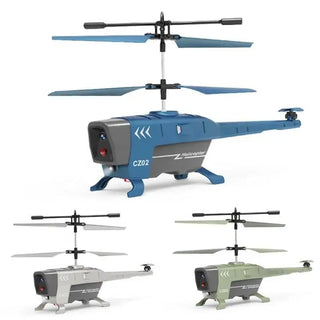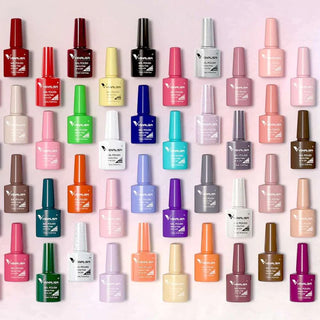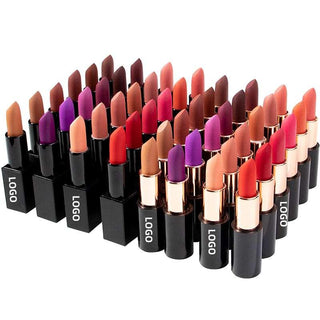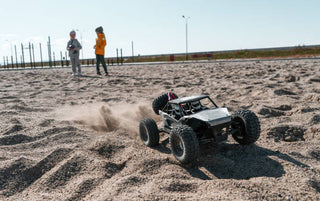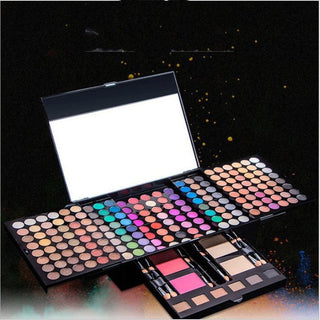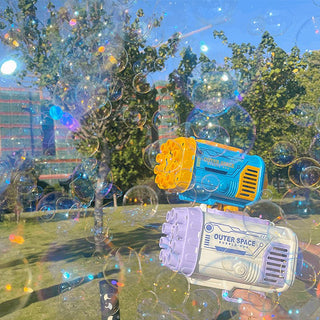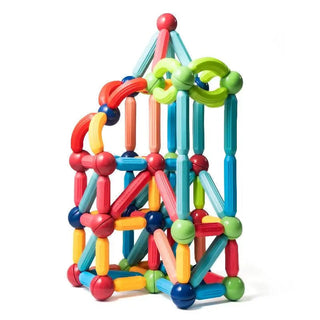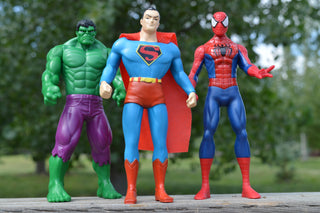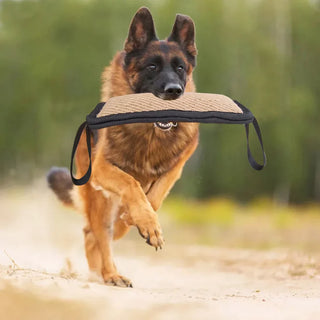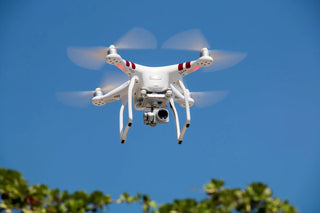News is changing, and so is how we get it. Remember when news was just what you read in a paper or saw on TV? Well, things are way different now. One of the biggest changes we're seeing is thanks to news drones. These aren't just toys; they're becoming a big deal in journalism. They let reporters get views and shots that were impossible before, or at least super expensive. This article will look at how news drones are shaking things up, what they're good for, and what might happen next with them.
Key Takeaways
- News drones are changing how we report stories, giving us views we couldn't get before.
- They help reporters get to breaking news faster and show what's happening in real-time.
- Using news drones can save money and keep journalists safer in risky situations.
- News drones are good for covering things like natural disasters, protests, and even environmental issues.
- There are still some rules and ethical things to figure out as news drones become more common, but the future looks pretty interesting for them.
The Emergence of News Drones in Journalism
Drones are changing the journalism game, offering views that used to be either impossible or too expensive. They've made aerial photography more accessible, even for smaller news outlets. Being able to quickly send out drones means journalists can capture breaking events like never before, from environmental disasters to big public gatherings.
Revolutionizing News Reporting
Drones are changing how news is reported. They give unique views and improve news reporting. They're not just about getting cool aerial shots; they're about adding depth to the story with angles and perspectives that you just can't get from the ground.
Democratizing Aerial Photography
Traditionally, getting aerial footage meant using helicopters or specialized equipment, which cost a lot. Drones are a cheaper option, making aerial journalism available to news organizations of all sizes. They get rid of the need to hire helicopters or specialized crews, which cuts down on the costs of covering stories from the air. This helps newsrooms use their money better and cover more stories, no matter their budget.
Swift Deployment for Breaking News
Drones are great for covering breaking news. Journalists can quickly send out drones to capture live footage from the scene, giving viewers up-to-the-minute updates. Without drones, news organizations would have to rely only on ground-level reporting, which means delays and less visual information. Drones let journalists get to the scene fast, offering real-time coverage and helping the audience understand what's happening.
Drones have become essential tools in modern newsrooms. They provide unique perspectives and enhance news reporting, allowing journalists to capture unfolding events and deliver real-time coverage. This technological advancement has revolutionized the way news is gathered and disseminated, offering audiences a more comprehensive understanding of the world around them.
Transformative Impact of News Drones
Capturing Unique Aerial Perspectives
News drones have really changed the game. They give journalists the ability to grab amazing aerial shots that just weren't possible before. Think about it: getting a bird's-eye view of a massive protest or showing the true scale of a natural disaster. Drones let news outlets tell stories in a way that really grabs your attention and helps you understand what's going on. It's not just about pretty pictures; it's about adding a whole new layer to the story. For example, aerial footage can show the extent of damage after a hurricane far better than any ground report.
Enabling Real-Time Reporting
Drones are super useful for covering breaking news. Instead of waiting for reporters to get to the scene, news organizations can quickly send out a drone to capture live footage. This means viewers get up-to-the-minute updates, which is a huge deal in today's fast-paced world. Without drones, news outlets would have to rely on ground-level reporting, which can be slow and might not give you the full picture. Drones let journalists be on the spot almost instantly, giving audiences a much better sense of what's happening. It's like having a live, aerial witness. This is especially useful for environmental disasters.
Enhancing Audience Comprehension
Drones don't just provide cool visuals; they actually help people understand complex situations better. Seeing an event from above can give you a sense of scale and context that you just can't get from the ground. For example, a drone can show the layout of a refugee camp or the path of a wildfire, making it easier to grasp the challenges involved. It's about more than just reporting the facts; it's about giving the audience the tools to really understand what's going on. Drones are becoming essential in the journalist’s toolkit.
Drones are changing how we see the news. They offer perspectives that were once impossible, making stories more engaging and easier to understand. It's not just about the technology; it's about using that technology to tell better stories and keep the public informed.
Advantages of Integrating News Drones
Cost-Effectiveness for News Organizations
Okay, so let's talk money. Traditional aerial footage? Think helicopters, specialized crews, and a whole lot of dollar signs. Drones change the game. They're way cheaper to operate, which means even smaller news outlets can get those sweet aerial shots. No more breaking the bank just to get a bird's-eye view. This aerial journalism accessibility is a game changer.
Increased Accessibility to Aerial Footage
It's not just about the money, though that's a big part. Drones make aerial footage way more accessible in general. Think about it: you don't need to book a helicopter or get special permits every time you want to get some shots from above. Drones can be deployed quickly and easily, which means journalists can get the footage they need when they need it. This is especially important for breaking news, where every second counts. Plus, it opens up opportunities to cover stories in remote or hard-to-reach areas that would have been impossible to access before.
Here's a quick rundown:
- Faster deployment times
- Access to difficult locations
- Reduced logistical hurdles
Mitigating Risks for Journalists
Journalism can be dangerous, plain and simple. Drones can help keep journalists out of harm's way. Instead of sending a reporter into a riot or a natural disaster zone, you can send a drone. It can capture footage and gather information without putting anyone at risk. It's a safer way to cover dangerous situations, and that's something we can all get behind. Drones allow journalists to cover dangerous situations from a distance.
Using drones in news reporting isn't just about getting cool shots; it's about protecting the people who are out there telling the stories. It's about making sure they can do their jobs safely and come home to their families at the end of the day. That's a huge win in my book.
Real-World Applications of News Drones
News drones aren't just a cool gadget; they're changing how stories get told. They're showing up everywhere, from disaster zones to political rallies, giving us views we never had before. It's not just about getting a pretty picture; it's about getting the story right, fast, and sometimes, safely.
Covering Natural Disaster Aftermaths
Drones are invaluable after disasters, providing a bird's-eye view of the damage. They can quickly assess the situation, helping rescue teams and aid organizations figure out where to focus their efforts. Before drones, this kind of assessment took days, even weeks. Now, it can happen in hours. It's a game-changer for disaster relief. For example, after a hurricane, drones can map flooded areas, identify damaged buildings, and even locate people who need help. This information is critical for emergency response.
Documenting Political Protests
Drones offer a unique perspective on political protests, capturing the scale and scope of these events in a way that ground-level reporting simply can't. They can show the size of the crowd, the layout of the protest area, and any potential flashpoints. This helps viewers understand the dynamics of the protest and the issues at stake. It's not just about counting heads; it's about understanding the energy and the message of the protest. It's a powerful tool for documenting history as it unfolds.
Aiding Investigative Journalism
News drones are also making waves in investigative journalism. They can access areas that are difficult or dangerous for reporters to reach, uncovering hidden stories and exposing wrongdoing. For example, drones have been used to document environmental damage, track illegal logging, and even uncover evidence of human rights abuses. The ability to get an aerial view can reveal patterns and connections that would be impossible to see from the ground. It's a new frontier for investigative reporting.
Drones have become indispensable tools in journalism, transforming the way news is reported and enhancing the overall news consumption experience. Through their aerial footage and unique perspectives, drones bring an unparalleled level of visual storytelling to news reporting, captivating audiences and deepening their understanding of events. The real-time reporting capabilities of drones ensure that breaking news is delivered promptly and accurately, allowing audiences to stay informed as events unfold.
News Drones in Environmental Reporting

Monitoring Ecological Changes
Drones are changing how reporters track changes in nature. They can hover over large areas and snap clear shots without disturbing wildlife. Here’s what they often help us watch:
- Shifts in forest cover after logging or fires
- Animal herds moving across plains or rivers
- Water levels rising in lakes and rivers
| What’s Measured | Sensor Type | How Often |
|---|---|---|
| Tree loss | RGB camera | Weekly |
| Ice melting | Thermal camera | Monthly |
| Wetland spread | LiDAR | Biweekly |
Sometimes news sites route their live feeds through a Cloudflare security check to keep streams stable.
Watching an area over time with drone footage lets you spot small shifts before they turn into big problems. It feels like time-lapse from above.
Assessing Environmental Damage
When disaster strikes—an oil spill, flood, or chemical leak—drones jump into action. They give teams quick aerial scans so they know where to send help. Common steps include:
- Flying a grid over the affected zone
- Marking spots of heavy impact or debris
- Sharing real-time maps with on-ground crews
Visualizing Conservation Efforts
Drones don’t just show trouble—they also highlight progress. Conservation groups use them to chart new tree lines, track animal crossings, and map restored wetlands. You might see:
- Seedlings taking root in a reforested patch
- Cameras on fences recording wildlife at new corridors
- Aerial views of marshes rebounding after cleanup
By offering a bird’s-eye view, drones turn data into clear visuals that anyone can understand.
Navigating Challenges with News Drones
Addressing Regulatory Hurdles
Okay, so you've got your drone, you're ready to get some awesome footage, but hold up! There's a whole bunch of rules you need to know about. The FAA (Federal Aviation Administration) has rules about where you can fly, how high you can go, and whether you need a license. It's not as simple as just launching and hoping for the best. You need to check local ordinances too, because cities and towns might have their own restrictions. It's a bit of a headache, but ignoring these rules can land you in serious trouble. Understanding and complying with these regulations is key to responsible drone journalism.
Overcoming Technical Skill Requirements
Flying a drone isn't like playing a video game. It takes practice, skill, and a good understanding of how these things work. You need to know about weather conditions, how to troubleshoot problems, and how to get the best shots. It's not just about pointing and shooting; it's about knowing your equipment and being able to handle unexpected situations. Plus, you might need to learn how to edit video and audio, which is a whole other skill set. There are courses and certifications you can get, and honestly, they're worth the investment.
Balancing Ethical Considerations
This is a big one. Just because you can fly a drone somewhere doesn't mean you should. Think about privacy. Are you invading someone's personal space? Are you being respectful of people's grief or trauma? It's easy to get caught up in getting the perfect shot, but you need to remember that you're dealing with real people and real lives. It's about finding that balance between reporting the news and respecting people's rights. It's a tough line to walk, but it's essential for responsible journalism. For example, Cloudflare's security checks are important, but so is ethical reporting.
It's important to remember that with great power comes great responsibility. Drones offer incredible opportunities for news gathering, but they also raise serious ethical questions. Always consider the impact your reporting has on individuals and communities.
The Future Trajectory of News Drones
It's pretty clear that news drones are here to stay, and honestly, it's exciting to think about where they're headed. We're not just talking about slightly better cameras; we're talking about a whole new level of integration and capability. The future looks like it's going to be packed with smarter, faster, and more connected drones.
Advancements in Drone Technology
Drone tech is moving fast. We're seeing improvements in battery life, camera quality, and flight stability all the time. It's not just about flying longer; it's about getting better footage in more challenging conditions. Think about drones that can handle stronger winds, fly in light rain, and still send back crystal-clear images. Plus, AI is starting to play a bigger role, helping drones navigate complex environments and even make decisions on the fly. This means less reliance on human pilots and more autonomous operation, which is a game-changer for getting news out fast.
Integration with 5G Connectivity
5G is going to be huge for news drones. With faster data speeds and lower latency, we'll be able to stream live footage in real-time, no matter where the drone is. Imagine a drone covering a breaking news event and broadcasting live to millions of viewers with zero lag. That's the power of 5G. It also opens up possibilities for remote control and management of drones, meaning news organizations can operate drones from anywhere in the world. This 5G connectivity will allow for more efficient and responsive news gathering.
Evolving Regulatory Frameworks
Right now, drone regulations are kind of a patchwork. Some places are strict, others are more relaxed. But as drones become more common, we're going to see more standardized rules and guidelines. This could mean things like designated airspaces for news drones, streamlined permitting processes, and clear rules about privacy and safety. The goal is to create a framework that allows journalists to use drones effectively while also protecting the public. It's a tricky balance, but it's essential for the long-term success of drone journalism.
It's important to remember that with all these advancements, ethical considerations will be key. We need to make sure that drones are used responsibly and that we're not sacrificing privacy or safety in the pursuit of a good story. It's about finding the right balance between innovation and responsibility.
News drones are changing how we get our news. They can go places people can't, showing us things from a new angle. Want to see how these flying cameras are making news better? Check out our full article to learn more.
Conclusion
So, to wrap things up, drones have really changed how news gets reported. They give us these amazing views from above, which makes stories way more interesting and helps people understand what's going on. Because drones can get to places fast and show things live, we all stay in the loop as stuff happens. Plus, they're not super expensive like helicopters, so even smaller news places can use them. This means more stories get told from the sky. Drones also keep reporters safer, which is a big deal. They can even find stories that might otherwise stay hidden. Sure, there are some rules and tricky parts to figure out, but drones are definitely a big part of how news will be done in the future. They're making news more visual and helping us see the world in new ways.
Frequently Asked Questions
What are news drones?
News drones are small, flying robots that carry cameras. Journalists use them to get pictures and videos from above, showing things from a new angle that regular cameras can't.
How do drones help journalists?
Drones help journalists by letting them get close to events safely, like natural disasters or big protests, without putting themselves in danger. They can also show a wider view of what's happening, making stories easier to understand.
Are drones cheaper than old ways of getting aerial footage?
Yes, drones make it cheaper to get aerial shots. Before, you needed helicopters, which cost a lot. Drones are much more affordable, so even smaller news groups can use them.
How do drones make news stories clearer?
Drones can show the size of big events, like how many people are at a protest, or how much damage a flood caused. They help people see the full picture.
What are some problems with using drones for news?
Using drones for news has some rules. People worry about privacy, like drones looking into private yards. Also, there are laws about where drones can fly, especially near airports or big crowds.
What's next for news drones?
The future of news drones looks exciting! They'll likely get smarter, fly longer, and work with faster internet like 5G. This means they'll be even better at getting news out quickly and safely.

